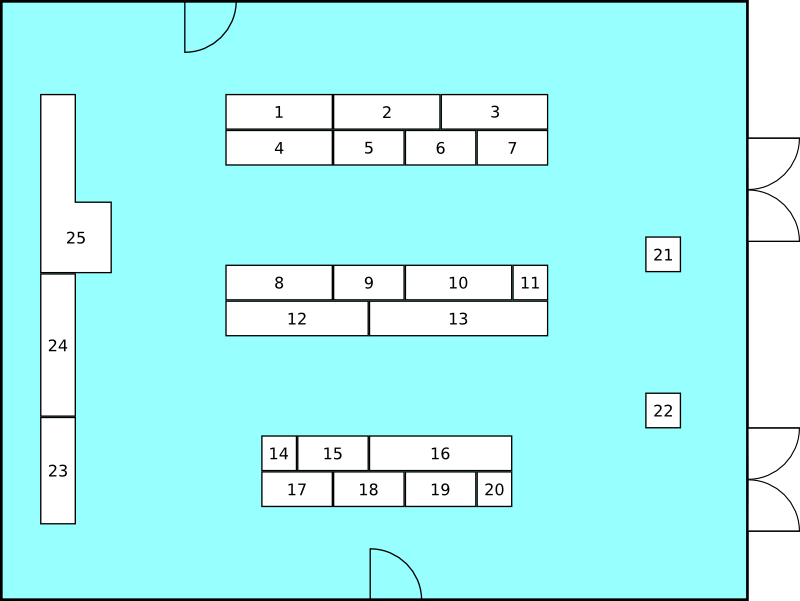Exhibitions
The subject of this year's special exhibition is analog computers.
The following exhibitions have been registered:
- HP9845 – The commercial beginning of the age of workstations
Ansgar Kückes, stand 1
- Cornerstones of Personal Computing
Ansgar Kückes, stand 2
- Home computers by Schneider – The CPC
Joachim Schwanter, stand 3
- Old 8 bit equipment from East and West Germany
Ralf Springer, stand 4
- Game development for the Atari 800 XL using cross development tools (Eclipse with WUDSN IDE)
Thomas Schulz, stand 5
- Game development for the Commodore 64 using cross development tools (CBM Program Studio, WinVICE and Cassiopei)
Ernst Neubeck, stand 6
- Programming demos for the Commodore Amiga
DelayerZ, stand 7
- Speech synthesis and plotter for the c't86
Heinz and Helmut Jakob, stand 8
- C64 Club Berlin – Working against planned obsolescence
Dirk Höpfner, Malte Schulze, Ingolf Ihrig, Svante Ihrig and Björn Riecken, stand 9
- 30 years of AMIGA
Mike Rühlmann, stand 10
- Commodore Amiga CD32 WSI
Jan-Mathis Schnurr, stand 11
- Digital toys from the Medienarchäologischer Fundus
HU Berlin, Chair of Media Theory, stand 12
- Verein zum Erhalt klassischer Computer – Live BBS communication
Verein zum Erhalt klassischer Computer e.V., stand 13
- Computers in cases
Hans Franke, stand 14
- The computers of Lee Felsenstein
Hans Franke and Stefan Höltgen, stand 15
- Spectrum Profi Club (SPC)
Norbert Opitz and Ingo Truppel, stand 16
- Reconstructing an alternative CP/M floppy system for the KC85/3
Dirk Kahnert, stand 17
- Unix operating systems on GDR computers with 16 bit processors
Enrico Grämer, stand 18
- Experiencing and understanding punched cards
Michael Löblich, stand 19
- TTL Computer SPACE AGE 2
Henry Westphal (TU Berlin and TIGRIS-Elektronik GmbH), stand 20
- Hands-on exhibition using the example of "BASIC on the Schneider CPC"
Oldenburger Computer-Museum e.V., stand 21
- The history of the internet – Coming soon to Berlin as a museum
Paul Rascheja, stand 22
- PiDP-8 & KIM Uno: building replicas of the classics
Oscar Vermeulen, stand 23
- Collection of classic 1970's "blinkenlight" panels
Early computers had console panels with switches and lights to operate the processor and peripherals directly. These panels were the physical interface between processor and human operators, they were designed as eye-catchers. Some are icons of industral design. When the ancient computers were scrapped, often somebody rescued at least the processor panel. On exhibition are the panels of some great 1970's machines: PDP-10, PDP-11, PDP-12, PDP-15, Data General Nova, IBM S/370, Honeywell H632. Three panels are connected to simulations of the system they once belonged to (google for "Blinkenbone"), so they can be used to enter and run little assembler programs by hand. Also shown is the famous "idle pattern" of a DEC RSX-11 system. Jörg Hoppe, stand 24
- PDP-8/E
Philipp Hachtmann, stand 25
- Heinrich Heidersberger: Brunsviga – A brain made of steel
Institut Heidersberger gGmbH, stand 26 near the entrance
- Bildschirmtext, the web of the 80s
Philipp Maier, stand 35
More information about the exhibitions is available in German.
Exhibition plan

Page last modified on 2020-07-08
